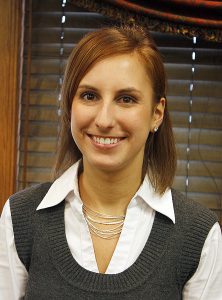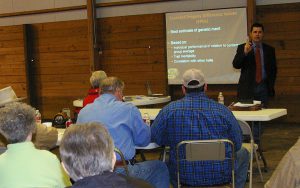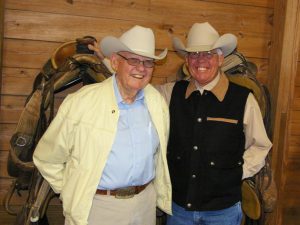
As an upcoming CAB intern (officially this fall), I know that we often think about a few basic questions. What does it take to produce high quality beef?
Good genetics? Certainly. Proper heard health management? Of course! But most of all it takes commitment – a commitment to managing for quality.
This week I had the chance to attend a “Managing for Success” seminar in Lexington, Okla. As the winds “came sweeping down the plains,” beef producers from across the Sooner State gathered at Haines Land and Cattle ranch to hear from industry experts.
Throughout the day, our seminar speakers answered some key questions to help cattlemen focus on the benefits of managing for quality.
What does it entail?
There’s a whole toolbox to draw from to improve herd quality. EPDs (expected progeny differences), DNA markers, and proper herd health were some that drew the most discussion. Learning to use genetic prediction tools is one of the first steps in producing cattle that will grade high at the plant.
“EPDs are the best predictor of high quality cattle,” said Mark Johnson, Oklahoma State University animal scientist. “You need to know what your intended market is.”
Understanding DNA can also help in selecting for higher quality. “Integrity of pedigree is everything,” said Kevin Milliner of Pfizer Animal Genetics. With DNA technologies, seedstock producers can manage simple recessive genes (like red hide color for example),and use risk management strategies in a multiple-sire breeding pasture.

Commercial producers can determine bull dominance, and identify sires of the best and worst calves. A few genetic marker tests Milliner touched on included: sireTRACE, GeneStar, and HD 50K, a technology created specifically for black Angus cattle.
Quality beef starts with good genes, but proper heard health helps ensure cattle reach their full genetic potential. Michael Nichols, DVM with Pfizer Animal Health, discussed treatment, control and prevention strategies.
Dale Moore, of Cattleman’s Choice Feedyard emphatically agreed. “What you guys do goes all the way to the plate – health pays. We’re going to pay for quality, and it starts at the ranch.”

But why high-quality beef?
The answer is simple – consumer demand. “Beef is the king in terms of animal protein,” said our own Larry Corah, and demand for high-quality beef is on the rise. “Consumers like brands, and that includes branded beef.” He closed with inspiring advice: “Target something you believe in – it starts with you.”

Dale Moore summed up the prevailing mood at the seminar: “It’s a great day to be in the North American cattle industry.” That it is!
-Jen
[Jennifer Gillespie is a graduate student in Ag Communications at Oklahoma State University, and Fall 2011 CAB intern]
